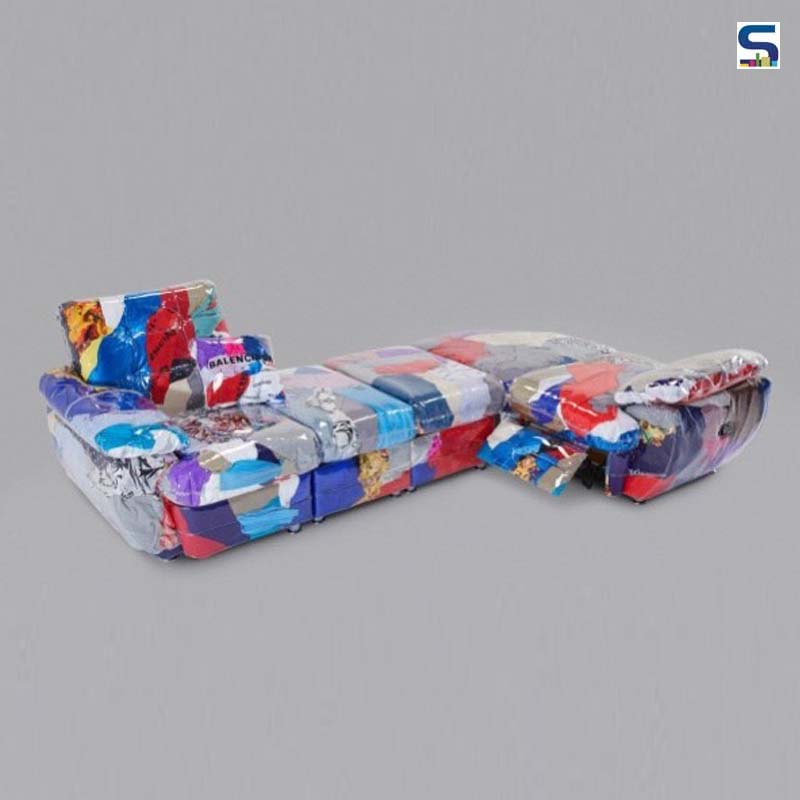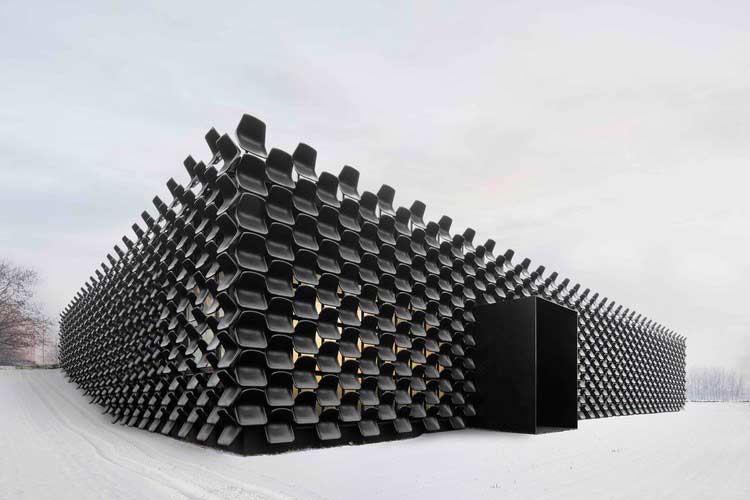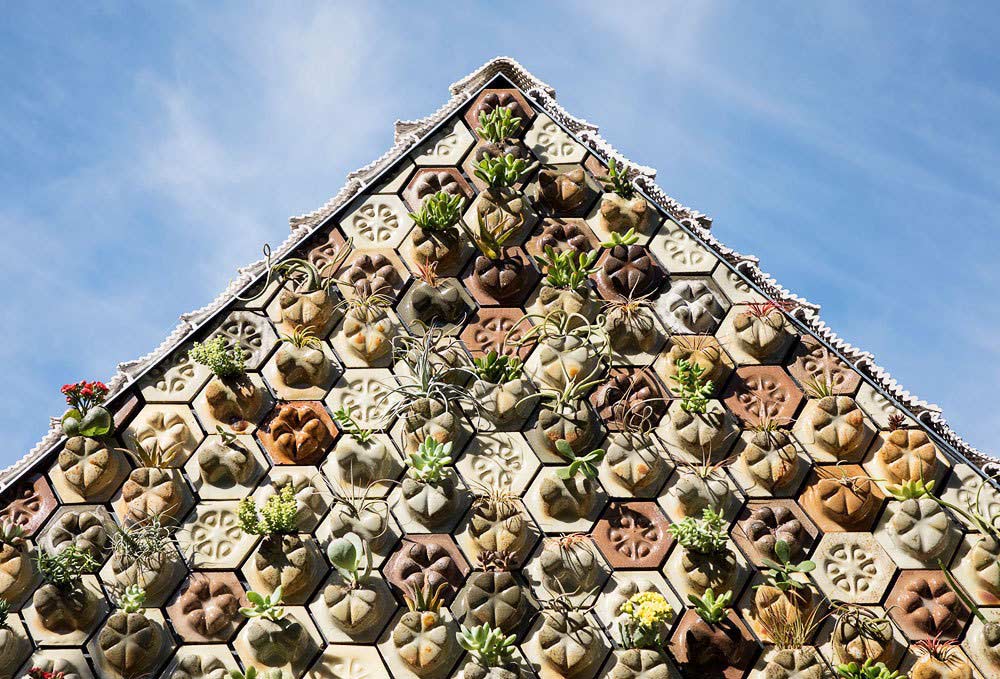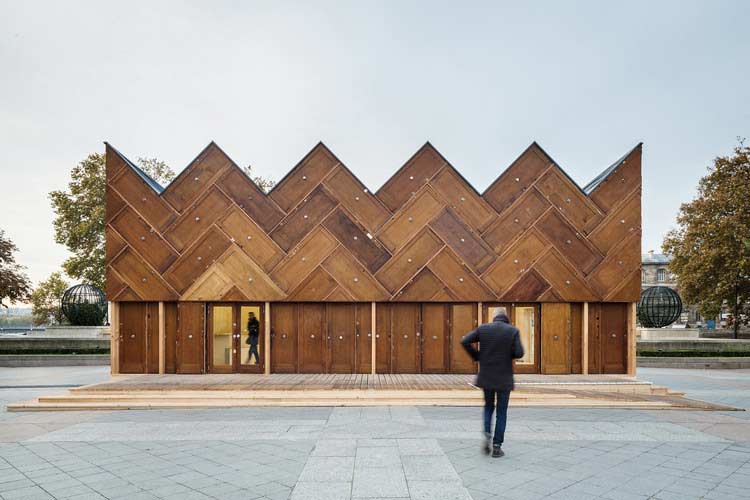
Someone correctly quoted that architecture is what bridges the gap between the built and the unbuilt environment. To make recycling a successful strategy we must take on appropriate measures to include recycling in the architectural industry. Even with all the efforts put into recycling, fruitful results will only be seen when there are ways to adopt recycled articles such as aluminium cans, plastic bottles, paper cups etc into building facades. Recycled materials are less costly too. In this blog, SURFACES REPORTER (SR) takes you on an in-depth discussion on recycled materials in architecture and Design.
In countries such as the U.S.A. using recycled mater could land you one step closer to being recognised by LEED, U.S.A. Green Building Council's Leadership in Energy and Environmental Design. The organisation is the country’s notation body that rates the performance of buildings. Recycled materials such as steel have a high percentage of recycled content. Additionally, roofing materials such as copper shingles have a good amount of recycled material and have higher durability and lower maintenance. Here, we are completing a list of waste materials used in building design.
1. Worn-out clothes

Did you know that the discarded clothes in landfills take years to degrade? You know what is a better use, convert them into eco-friendly bricks! Yes, it is possible. Ar. Clarisse Merlet, an architect from Paris has converted clothes to bricks. Her innovation has helped her use 8 tonnes of dumped clothes to make about 1500 bricks. Another architect from Russia has surprised the world by turning worn-out clothes into furniture products for design exhibitions. The idea of reinventing useless clothes into useful products is truly incredible.
2. Plastic bottles

Plastic is a grave concern for all environmentalists. Plastic bottles are a worldwide used commodity. They are a threat to both wildlife and the marine ecosystem. Architects are taking steps to reuse bottles cleverly. Designer Garth Britzman of Lincoln, Nebraska has put these bottles to use to build a car shed. The 2010 Eco-ark pavilion for the Taipei International Exposition is another marvel of creativity by Ar. Arthur Huang. The structure has been built using 1.5 million plastic bottles. The building is intelligently designed to withstand large earthquakes and typhoons. New York City has opened the Head in the Clouds' Pavilion by STUDIOKCA which will leave you dreaming quite literally. The space is a cloud-shaped structure that helps to create a space for dreamers to put their heads and body in the city of dreams.STUDIOKCA collected used bottles from all around and repurposed them to construct the pavilion for more than 200 volunteers. The structure was constructed using 53,780 recycled bottles which is the amount thrown away in New York City in just one hour! It is a place where people can enter and admire the light and colour filtering through the waste bottles. For its structure sand, water and curved aluminium frame provide the support. The form contains a series of structural pillows made from jugs for the exterior and water bottles of 16 and 24 ounces filled with organic blue food that line the interior.
3. Agricultural and industrial waste

Waste products from agriculture and industries are being used to create the 3D exterior of this building in Napa Valley. In this project named Backyard Cabin Experiments With 3D-Printed Tiles, over 4,500 3D-printed ceramic tiles are used to build the exterior. Emerging products such as grape skins, salt, cement, and sawdust are being used to create unique types of tiles. The project will have two main types, panter tiles for the gable ends and seed tiles to wrap the walls and floor. Planter tiles will allow vegetation pockets for plants to grow.

Conclusion-Innovations in the architectural field is what keeps makes up sustainable development. Other initiatives such as the use of paper cups, E-waste and rubber waste are also as exciting, as the ones mentioned here.
Keep reading SURFACES REPORTER for more such articles and stories.
Join us in SOCIAL MEDIA to stay updated
SR FACEBOOK | SR LINKEDIN | SR INSTAGRAM | SR YOUTUBE
Further, Subscribe to our magazine | Sign Up for the FREE Surfaces Reporter Magazine Newsletter
Also, check out Surfaces Reporter’s encouraging, exciting and educational WEBINARS here.
You may also like to read about:
An eco-friendly alternative to plastic and wooden shipping pellets
Wallpaper made from Plant Fibres
Turning Waste masks and PPE Kits into bricks
And more…